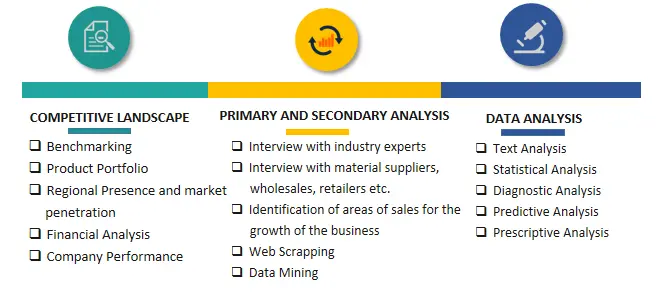
Pickup Trucks Market Size, Demand Analysis and Growth Outlook 2034
Global Pickup Trucks Market Size- By Fuel, By Vehicle - Regional Outlook, Competitive Strategies and Segment Forecast to 2034
| Published: Nov-2025 | Report ID: AMIN2595 | Pages: 1 - 221 | Formats*: |
| Category : Automotive & Transportation | |||


- In December 2024, Ram Trucks, a Stellantis brand, introduced the new Ram 1500 in Europe, featuring a 3-liter Hurricane High Output (H/O) Straight-Six Turbo (SST) engine and modern technologies such as Uconnect system, adaptive cruise control, forward collision warning, and emergency braking.
- In October 2024, Kia Corporation launched its first-ever pickup truck, the Kia Tasman, designed to meet the growing demand for lifestyle-oriented trucks and shifting consumer preferences.
- In July 2024, Toyota announced plans to launch an all-electric pickup truck by 2025, offering an electric version of its popular Hilux model, marking a major step toward vehicle electrification.
| Report Metric | Details |
| Market size available for years | 2021-2034 |
| Base year considered | 2024 |
| Forecast period | 2025-2034 |
| Segments covered | By Fuel, By Vehicle |
| Regions covered | North America, Latin America, Asia-Pacific, Europe, and Middle East & Africa |
| Companies Covered | Ashok Leyland Ltd, Ford Motor Company, General Motors Company, Hyundai Motor Company, Kia Corporation, Mahindra & Mahindra Ltd, Nissan Motor Co. Ltd, Stellantis N.V, Suzuki Motor Corp, Tata Motors Ltd, Toyota Motor Corp, Volkswagen Group. |
- Global Pickup Trucks Market Size (FY’2021-FY’2034)
- Overview of Global Pickup Trucks Market
- Segmentation of Global Pickup Trucks Market By Fuel (Diesel, Petrol, Electric)
- Segmentation of Global Pickup Trucks Market By Vehicle (Light-duty, Heavy-duty)
- Statistical Snap of Global Pickup Trucks Market
- Expansion Analysis of Global Pickup Trucks Market
- Problems and Obstacles in Global Pickup Trucks Market
- Competitive Landscape in the Global Pickup Trucks Market
- Details on Current Investment in Global Pickup Trucks Market
- Competitive Analysis of Global Pickup Trucks Market
- Prominent Players in the Global Pickup Trucks Market
- SWOT Analysis of Global Pickup Trucks Market
- Global Pickup Trucks Market Future Outlook and Projections (FY’2025-FY’2034)
- Recommendations from Analyst
- 1.1. Scope of the report
- 1.2. Market segment analysis
- 2.1. Research data source
- 2.1.1. Secondary Data
- 2.1.2. Primary Data
- 2.1.3. SPERs internal database
- 2.1.4. Premium insight from KOLs
- 2.2. Market size estimation
- 2.2.1. Top-down and Bottom-up approach
- 2.3. Data triangulation
- 4.1. Driver, Restraint, Opportunity and Challenges analysis
- 4.1.1. Drivers
- 4.1.2. Restraints
- 4.1.3. Opportunities
- 4.1.4. Challenges
- 5.1. SWOT Analysis
- 5.1.1. Strengths
- 5.1.2. Weaknesses
- 5.1.3. Opportunities
- 5.1.4. Threats
- 5.2. PESTEL Analysis
- 5.2.1. Political Landscape
- 5.2.2. Economic Landscape
- 5.2.3. Social Landscape
- 5.2.4. Technological Landscape
- 5.2.5. Environmental Landscape
- 5.2.6. Legal Landscape
- 5.3. PORTERs Five Forces
- 5.3.1. Bargaining power of suppliers
- 5.3.2. Bargaining power of buyers
- 5.3.3. Threat of Substitute
- 5.3.4. Threat of new entrant
- 5.3.5. Competitive rivalry
- 5.4. Heat Map Analysis
- 6.1. Global Pickup Trucks Market Manufacturing Base Distribution, Sales Area, Product Type
- 6.2. Mergers & Acquisitions, Partnerships, Product Launch, and Collaboration in Global Pickup Trucks Market
- 7.1. Diesel
- 7.2. Petrol
- 7.3. Electric
- 8.1. Light-duty
- 8.2. Heavy-duty
- 9.1. Global Pickup Trucks Market Size and Market Share
- 10.1. Asia-Pacific
- 10.1.1. Australia
- 10.1.2. China
- 10.1.3. India
- 10.1.4. Japan
- 10.1.5. South Korea
- 10.1.6. Rest of Asia-Pacific
- 10.2. Europe
- 10.2.1. France
- 10.2.2. Germany
- 10.2.3. Italy
- 10.2.4. Spain
- 10.2.5. United Kingdom
- 10.2.6. Rest of Europe
- 10.3. Middle East and Africa
- 10.3.1. Kingdom of Saudi Arabia
- 10.3.2. United Arab Emirates
- 10.3.3. Qatar
- 10.3.4. South Africa
- 10.3.5. Egypt
- 10.3.6. Morocco
- 10.3.7. Nigeria
- 10.3.8. Rest of Middle-East and Africa
- 10.4. North America
- 10.4.1. Canada
- 10.4.2. Mexico
- 10.4.3. United States
- 10.5. Latin America
- 10.5.1. Argentina
- 10.5.2. Brazil
- 10.5.3. Rest of Latin America
- 11.1. Ashok Leyland Ltd
- 11.1.1. Company details
- 11.1.2. Financial outlook
- 11.1.3. Product summary
- 11.1.4. Recent developments
- 11.2. Ford Motor Company
- 11.2.1. Company details
- 11.2.2. Financial outlook
- 11.2.3. Product summary
- 11.2.4. Recent developments
- 11.3. General Motors Company
- 11.3.1. Company details
- 11.3.2. Financial outlook
- 11.3.3. Product summary
- 11.3.4. Recent developments
- 11.4. Hyundai Motor Company
- 11.4.1. Company details
- 11.4.2. Financial outlook
- 11.4.3. Product summary
- 11.4.4. Recent developments
- 11.5. Kia Corporation
- 11.5.1. Company details
- 11.5.2. Financial outlook
- 11.5.3. Product summary
- 11.5.4. Recent developments
- 11.6. Mahindra & Mahindra Ltd
- 11.6.1. Company details
- 11.6.2. Financial outlook
- 11.6.3. Product summary
- 11.6.4. Recent developments
- 11.7. Nissan Motor Co. Ltd
- 11.7.1. Company details
- 11.7.2. Financial outlook
- 11.7.3. Product summary
- 11.7.4. Recent developments
- 11.8. Stellantis N.V
- 11.8.1. Company details
- 11.8.2. Financial outlook
- 11.8.3. Product summary
- 11.8.4. Recent developments
- 11.9. Suzuki Motor Corp
- 11.9.1. Company details
- 11.9.2. Financial outlook
- 11.9.3. Product summary
- 11.9.4. Recent developments
- 11.10. Tata Motors Ltd
- 11.10.1. Company details
- 11.10.2. Financial outlook
- 11.10.3. Product summary
- 11.10.4. Recent developments
- 11.11. Others
SPER Market Research’s methodology uses great emphasis on primary research to ensure that the market intelligence insights are up to date, reliable and accurate. Primary interviews are done with players involved in each phase of a supply chain to analyze the market forecasting. The secondary research method is used to help you fully understand how the future markets and the spending patterns look likes.
The report is based on in-depth qualitative and quantitative analysis of the Product Market. The quantitative analysis involves the application of various projection and sampling techniques. The qualitative analysis involves primary interviews, surveys, and vendor briefings. The data gathered as a result of these processes are validated through experts opinion. Our research methodology entails an ideal mixture of primary and secondary initiatives.



Frequently Asked Questions About This Report
PLACE AN ORDER
Year End Discount
Sample Report
Pre-Purchase Inquiry
NEED CUSTOMIZATION?
Request CustomizationCALL OR EMAIL US
100% Secure Payment






Related Reports
Our Global Clients
Our data-driven insights have influenced the strategy of 200+ reputed companies across the globe.






















